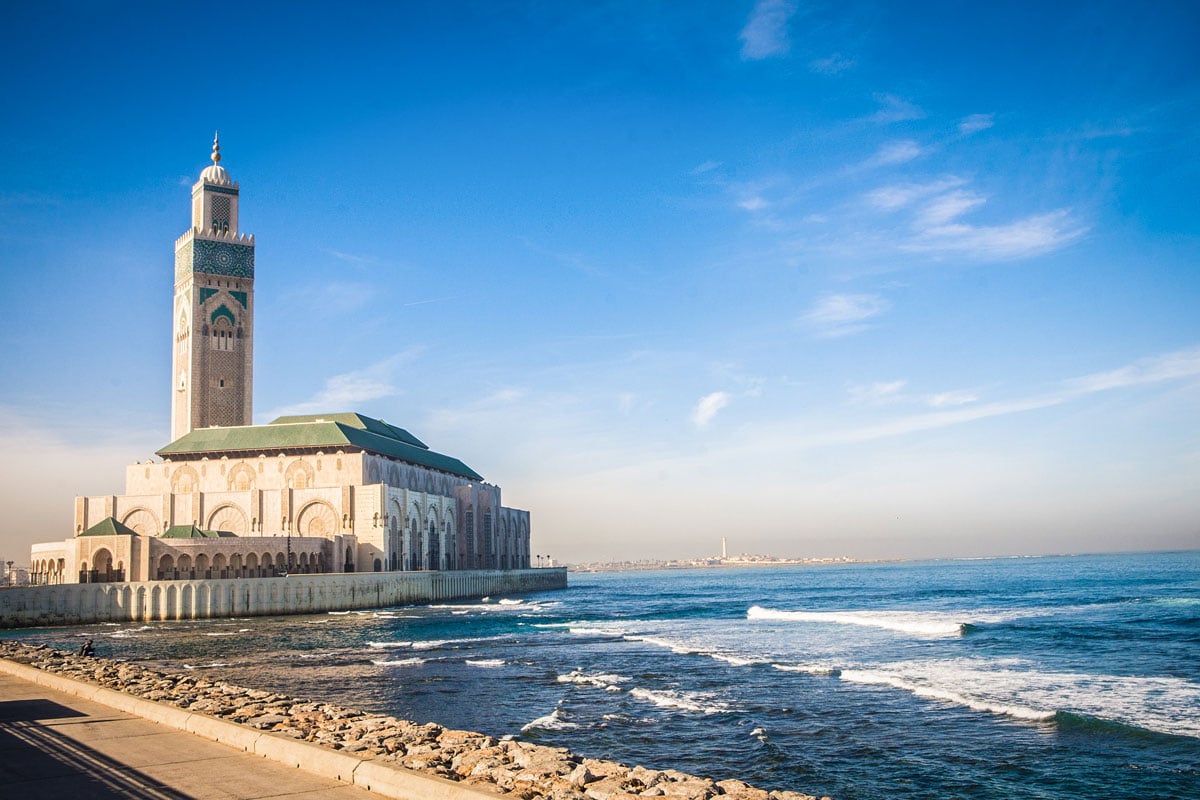
Casablanca, Essaouira & Marrakech
(04 Days / 03 Nights)
Day 1: Casablanca – Marrakech
Meet and greet and Casablanca port then transfer to Marrakech, the pearl of the south of Morocco and one of the most charming cities all over the world. There is absolutely a lot to see in this city that Winston Churchul called “the most beautiful place in the world at sunset”. Enjoy the guided city tour of Marrakech beginning with a visit to the Kotoubia Mosque. The mosque is the largest in Marrakech and one of the oldest mosques in the world. The minaret, 77 metres (253 ft) in height, includes a spire and orbs. It was completed under the reign of the Almohad Caliph Yaqub al-Mansur (1184 to 1199), and has inspired other buildings such as the Giralda of Seville and the Hassan Tower of Rabat. Continue to the world-famous Jemaa el Fna Square, which houses arrays of food, snake charmers, local musicians, and fortune-tellers. There’s nowhere on Earth like the Jemaa el Fna, the square at the heart of old Marrakesh. Your next stop is the Bahia Palace, and the Saadian Tombs. The Saadian tombs in Marrakech date back from the time of the sultan Ahmad al-Mansur (1578-1603). The tombs were discovered in 1917 and were restored by the Beaux-arts service. The mausoleum comprises the interments of about sixty members of the Saadi Dynasty that originated in the valley of the Draa River. Overnight in Marrakech.
Day 2: Marrakech – Essaouira
After breakfast, we will leave Marrakech heading to Essaouir where you will enjoy most of the day at leisure. This relatively small, easily navigable beach city is ideal for a free day. Essaouira has got a distinct multicultural feel, resulting from the large Portuguese, French, and Jewish populations that once called it home. Its mild climate and expansive stretches of ocean sand also place it among Morocco’s top beach towns. Essaouira’s walled medina was added to Unesco’s World Heritage list in 2001. Its well-preserved, late-18th-century fortified layout is a prime example of European military architecture in North Africa. For the visitor, the mellow atmosphere, narrow winding streets lined with colourful shops, whitewashed houses and heavy old wooden doors make it a wonderful place to stroll. Overnight in Essaouira.
Day 3: Essaouira – Safi – Oualidia – El Jadida – Casablanca
After breakfast, transfer to Casablanca via Safi, Oualidia and El Jadida. Safi is one of the most attractive cities in Morocco thanks to its long history and its modern aspects. The city was under protectorate by the Portuguese Empire from 1488 to 1541, while the fortress built to protect the city, under Portuguese rule is still there today. Safi nowadays is the main fishing port for the country’s sardine industry, and also exports phosphates, textiles and ceramics. During the Second World War, Safi was one of the landing sites for Operation Torch. After the visit of Safi, continue to Oualidia, another charming sea resort in Morocco. Oualidia is a small village on the Atlantic coast, facing a salt water lagoon and beach where ocean and coast merge. Oualidi is the ideal place to unwind. The magic of the lagoon and the tides provide a constantly-changing back veil. Poised on the edge of the ocean, in a site of great ecological importance, Oualidia will attract, captivate, energise and sooth in equal measure. We will continue via El Jadida to Casablanca for dinner and overnight.
Day4: Casablanca (city tour) – Transfer to the Seaport
After breakfast, start discovering this economic capital of the kingdom and its largest city. Mentioning the word “Casablanca” stirs emotions as most people have seen the famous Humphrey Bogart and Ingrid Bergman movie or read stories about Casablanca’s role in the history of Africa and Europe. Although Casablanca was the French colonial administrative center in the early 20th century, today it is the economic capital of the kingdom and home to over 5 million habitants. The full day city tour of Casablanca will include a visit to the splendid Hassan II mosque: a breathtaking landmark of the city. The grand mosque was built in 1993 with a blend of traditional Moroccan architecture and new technology that coasted over $800 million. The mosque was built in 6 years by over 30.000 craftsmen and was designed by the French architect Michel Pinseau. Hassan II mosque is the second largest in the world after the Masjid Al-Haram in Mecca and has the tallest minaret in the world with 210m. Continue along to Ain Diab Corniche where some time walk along the cost line is highly appreciated. Go on to the Habous charter, the oldest area in Casablanca and the setting of the Royal Palace. In the afternoon, transfer to your cruise.



